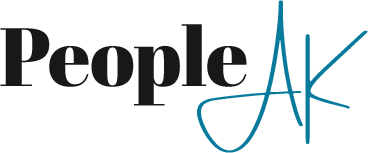Stephanie Haydn Buchanan / Senior Consultant
Building authentic teams focusing on individual strengths while leveraging their strengths as a collective, will create synergy that improves morale, and results. Employee retention is a topic many business leaders have recently contemplated. With the recruitment challenges, retention is even more important. While recent reports show unemployment trending down, the fact is, job seekers are asking for and receiving more, giving them the upper hand. So, how do you keep and reward the employees you currently have?
According to Gallup, “When employees are explicitly encouraged to use their talent in pursuit of a goal, individual engagement improves (from 9% to 15%) as does team performance and the company’s business metrics.” Furthermore, Gallup encourages employers to offer development programs; employees not only want professional development, they demand it.
So, what does it really mean to focus on individual strengths to develop teams that produce results? Gallup Strengths research indicates that leveraging strengths on projects and in day-to-day operations increases workplace satisfaction and performance. Team members operate in four (4) quadrants consisting of 34 unique strengths – executing, relationship building, influencing, and strategic.
When asked to perform in a lower quadrant an employee will perform, but it’s draining them and decreases job satisfaction. Conversely, when an employee performs leaning into their strengths they are energized and engaged.
Here is how the Strengths approach looks in action:
Sally – an executor is given an assignment, she jumps in, looks and at the expected outcome and gets the project completed.
Jessie – is analytical and wants to understand each piece of the equation before getting started. He needs a strategy to feel confident that the anticipated outcomes are the only possibility.
Lynn – is a communicator and high in the influencing theme. It is important to Lynn that each member of the team is heard and is onboard with the project.
When Sally, Jessie, and Lynn first began to work together Sally and Jessie were often at odds. Jessie felt that Sally did not consider all of her possible options and left something on the table that could prove valuable while Sally felt like Jessie asked too many questions. Lynn continually felt frustrated because the two were constantly at odds. After a few attempts to address their communication mishaps the team decided to engage in a team building exercise.
The team identified Gallup Strengths to address their needs. Each member of the team took part in an assessment to identify their top 10 strengths and most influential quadrants. All three were surprised at the results. Sally and Jessie understood the varied approach to a project and Lynn understood how to influence them to work cohesively. Now when they launch a new project each member of the team contributes differently but more effectively. Jessie begins with research and analysis, Sally leans in and gets the work done, and Lynn creates a plan to gather consensus across the organization.
Most employees want to contribute to the success of an organization, and they want to feel valued. With a Strength based focus, organizations will realize better engagement, team cohesion, job satisfaction, and ultimately greater employee engagement. Retention is the ultimate goal and employees working well with their teammates, produce results, and feel valued will stay.

